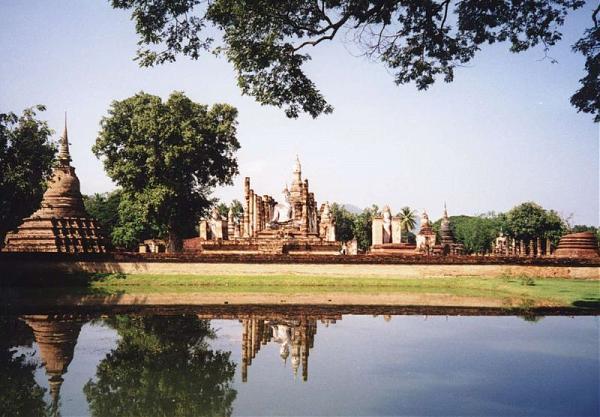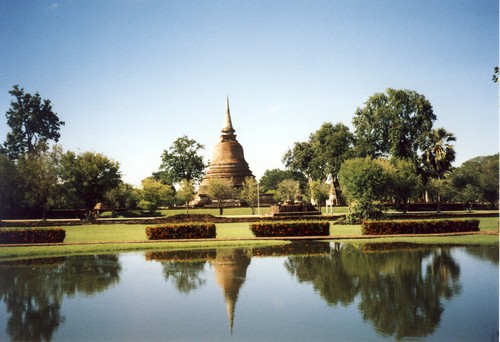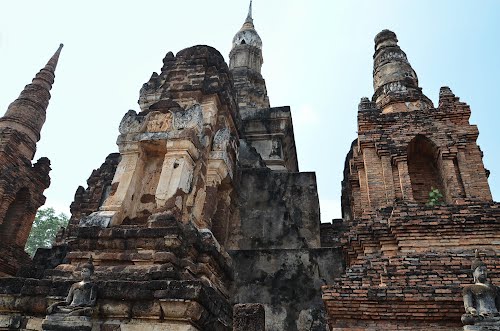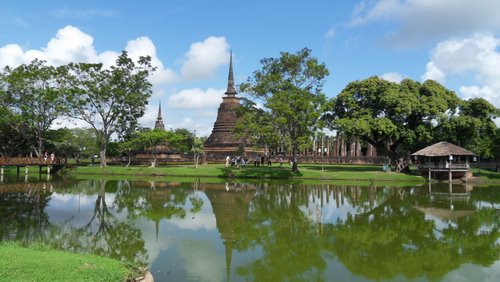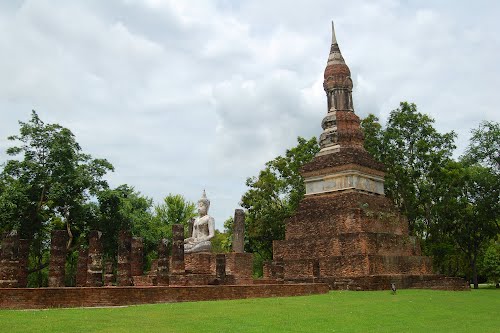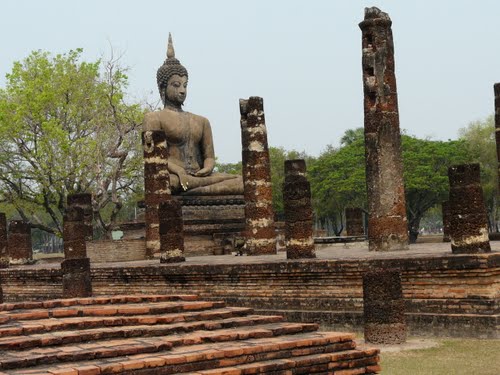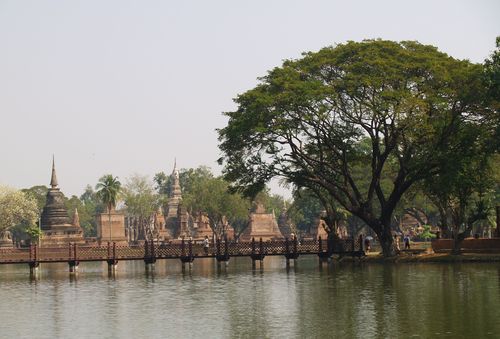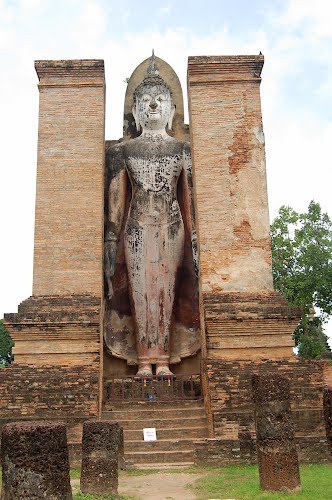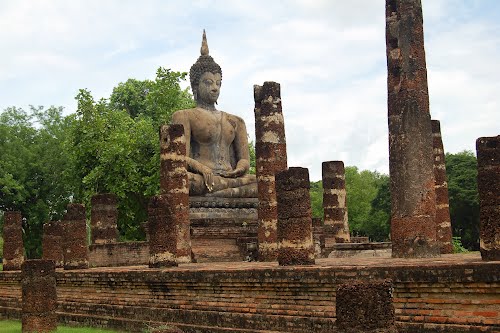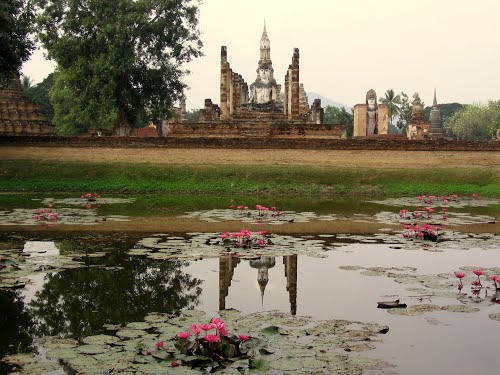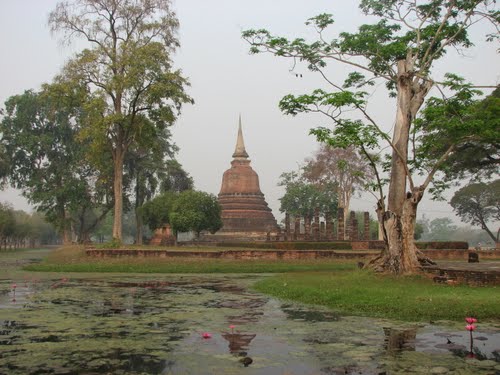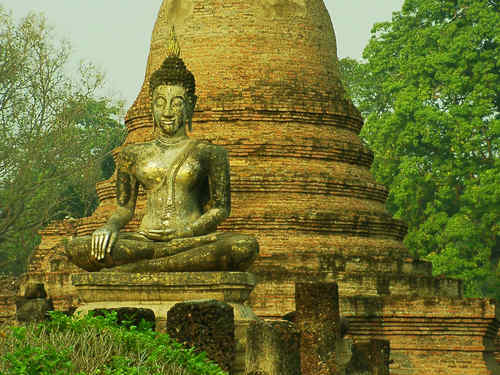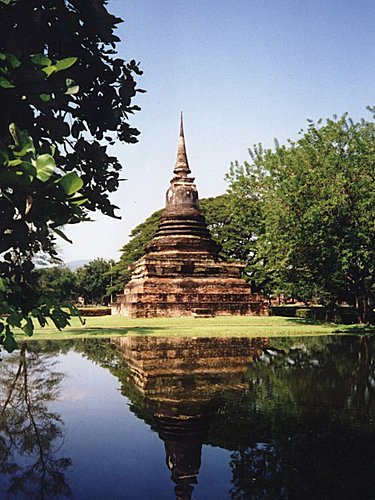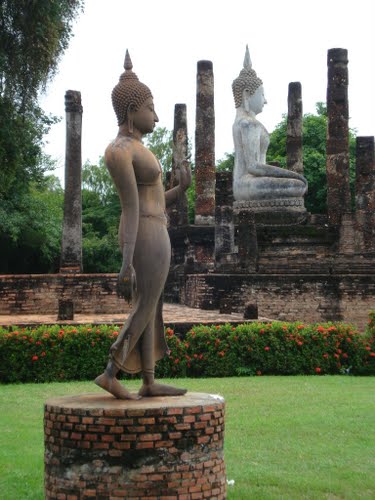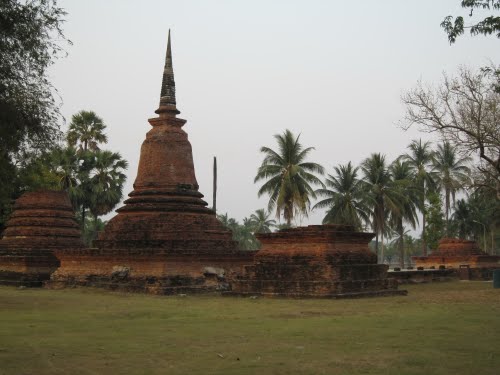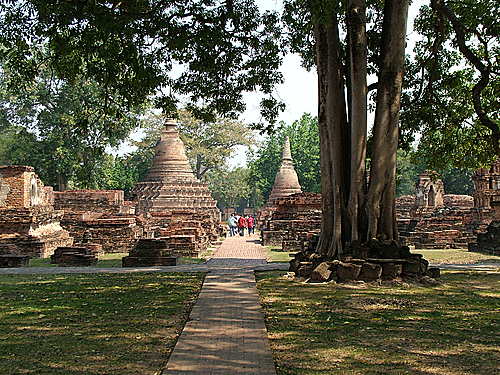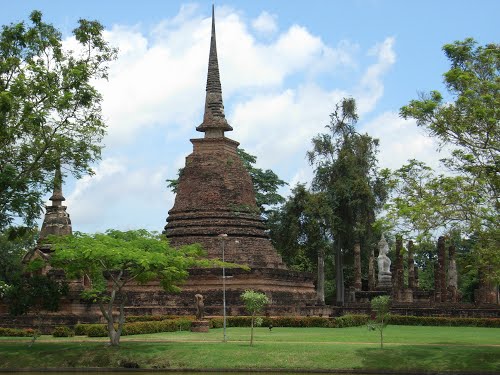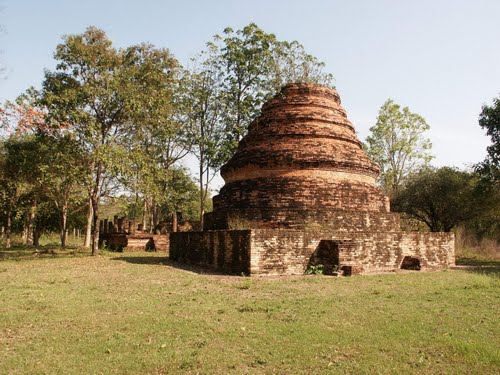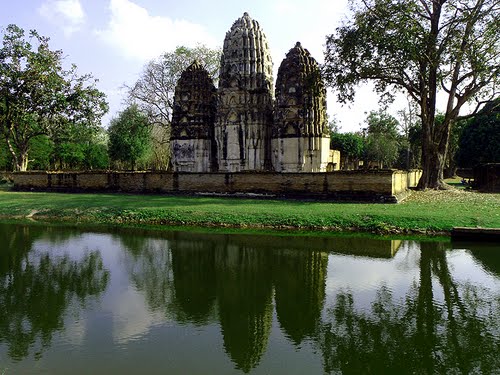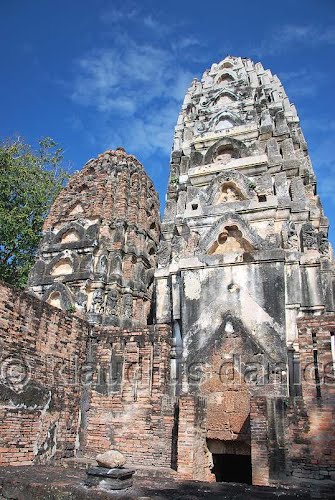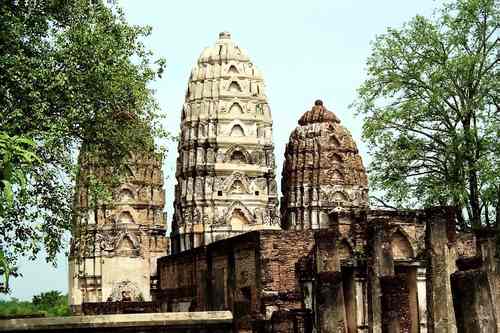The Sukhothai Historical Park covers the ruins of Sukhothai, literally "Dawn of Happiness", capital of the Sukhothai Kingdom in the 13th and 14th centuries, in what is now Northern Thailand. It is located near the modern city of Sukhothai, capital of the province with the same name.
The city walls form a rectangle about 2 km east-west by 1.6 km north-south. There are 193 ruins on 70 square kilometers of land. There is a gate in the centre of each wall. Inside are the remains of the royal palace and twenty-six temples, the largest being Wat Mahathat. The park is maintained by the Fine Arts Department of Thailand with help from UNESCO, which has declared it a World Heritage Site. Each year, the park welcomes thousands of visitors who marvel at the ancient Buddha figures, palace buildings and ruined temples. The park is easily toured by bicycle or even on foot.
History
Liberation from Lawo
Prior to the 13th century, a succession of Tai kingdoms existed on the northern highlands including the Ngoenyang kingdom and the Heokam kingdom of Tai Lue people. Sukhothai had been a trade center and part of Lawo, which was under the domination of the Khmer Empire. The migration of Tai people into the upper Chao Phraya valley was somewhat gradual.
Modern historians believe that the secession of Sukhothai from the Khmer empire began as early as 1180 during the reign of Pho Khun Sri Naw Namthom who was the ruler of Sukhothai and the peripheral city of Sri Satchanalai. Sukhothai had enjoyed substantial autonomy until it was re-conquered around 1180 by the Mons of Lawo under Khomsabad Khlonlampong.
Two brothers, Pho Khun Bangklanghao and Pho Khun Phameung took Sukhothai from Mon hands in 1239. Khun before becoming a Thai feudal title, was a Tai title for a ruler of a fortified town and its surrounding villages, together called a muang. Bangklanghao ruled Sukhothai as Sri Indraditya – and began the Phra Ruang Dynasty - he expanded his primordial kingdom to the bordering cities. At the end of his reign in 1257, the Sukhothai kingdom covered the entire upper valley of the Chao Phraya River.
Traditional Thai historians considered the founding of the Sukhothai Kingdom as the beginning of the Thai nation because little was known about the kingdoms prior to Sukhothai. Modern historical studies demonstrate that Thai history began before Sukhothai. Yet the foundation of Sukhothai is still a celebrated event.
Expansions under Ramkamhaeng
Pho Khun Ban Muang and his brother Ram Khamhaeng expanded the Sukhothai kingdom. To the south, Ramkamhaeng subjugated the kingdom of Supannabhum and Sri Thamnakorn (Tambralinga) and, through Tambralinga, adopted Theravada as state religion. Although traditional history described the extension of Sukhothai in a great fashion, the accuracy of these claims is disputed. To the north, Ramkamhaeng put Phrae and Muang Sua (Luang Prabang) under tribute.
To the west, Ramkhamhaeng helped the Mons under Wareru to free themselves from Pagan domination and establish a kingdom at Martaban. So, Thai historians considered the Kingdom of Martaban a Sukhothai tributary. However, in practice, such Sukhothai domination may not have extended that far.
With regard to culture, Ramkhamhaeng had the monks from Sri Thamnakorn propagate the Theravada religion in Sukhothai. In 1283, Ramkamhaeng is said to have invented the Thai script, formulating into the controversial Ramkamhaeng Stele discovered by Mongkut 600 years later.
It was also during this period that the first contacts with Yuan Dynasty were established and Sukhothai began sending trade missions to China. One well-known export of Sukhothai was the Sangkalok. This was the only period that Siam produced Chinese-styled ceramics, which fell out of use by the 14th century.
Decline and domination of Ayutthaya
The Sukhothai domination was, however, short-lived. After the death of Ramkhamhaeng in 1298, Sukhothai's tributaries broke away. Ramkhamhaeng was succeeded by his son Loe Thai. The vassal kingdoms, first Uttaradit in the north, then soon after the Laotian kingdoms of Luang Prabang and Vientiane, liberated themselves. In 1319 the Mon state to the west broke away, and in 1321 the Lanna absorbed Tak, one of the oldest towns under the control of Sukhothai. To the south, the powerful city of Suphanburi also broke free early in the reign of Loe Thai. Thus the kingdom was quickly reduced to its former local importance only. Finally in 1378, the armies from expanding Ayutthaya kingdom invaded and forced Sukhothai's King Thammaracha II submitted to this new power. After the Battle of Sittaung River in 1583, King Naresuan of Phitsanulok (and crown prince of Ayutthaya) forcibly relocated people from Sukhothai and surrounding areas to the Southern Central plain, due to the war with the Burmese and an earthquake.
Later Development
Sukhothai repopulated again but suffered from continuously urban decline due to successive Burmese–Siamese wars especially Burmese–Siamese War (1765–67). In 1793 Rama I, after establishing Bangkok as a new capital city of the Kingdom, found New Sukhothai in Thani, 12 km to the east of old Sukhothai, thus the fully abandoning Sukhothai. In 1801 Rama I commissioned the construction of many royal temples in the capital city, ordered that various old Buddha images should be brought to Bangkok from the ruined temples around the country. One of the Buddha images is the famous 8 metre tall bronze Phra Sri Sakyamuni, the principal Buddha image of Wat Suthat, which was the principal Buddha image of Wat Mahathat, the biggest temple in Sukhothai. In 1833 Mongkut, during his monkhood, travelled to Sukhothai and discovered the controversial Ramkhamhaeng stele in Wat Mahathat and other artifects, now in the National Museum in Bangkok. The formal name of this stone is The King Ram Khamhaeng Inscription Documentary heritage inscribed on the Memory of the World Register in 2003 by UNESCO.
In July 1988 the park was officially opened. On December 12, 1991, it was declared a World Heritage Site as part of the Historic Town of Sukhothai and Associated Historic Towns together with the associated historical parks in Kamphaeng Phet and Si Satchanalai.


